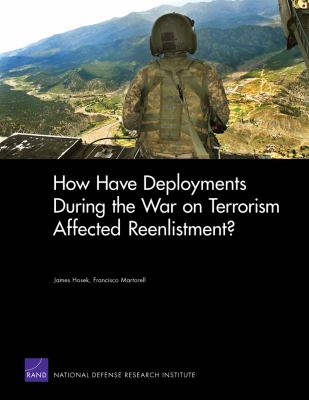
Book
|
How have deployments during the war on terrorism affected reenlistment?
Copies
3 Total copies, 3 Copies are in,
0 Copies are out.
Title
How have deployments during the war on terrorism affected reenlistment?
Call No
UB323
Subjects
War on Terrorism, 2001-2009---Manpower--United States.
War on Terrorism, 2001-2009--Manpower--United States.
United States--Armed Forces--Recruiting, enlistment, etc.
United States--Armed Forces--Foreign service.
United States--Armed Forces--Operational readiness.
United States--Armed Forces--Recruiting, enlistment, etc.
United States--Armed Forces--Foreign service.
United States--Armed Forces--Operational readiness.
War on Terrorism, 2001-2009--Manpower--United States.
United States--Armed Forces--Recruiting, enlistment, etc.
United States--Armed Forces--Foreign service.
United States--Armed Forces--Operational readiness.
United States--Armed Forces--Recruiting, enlistment, etc.
United States--Armed Forces--Foreign service.
United States--Armed Forces--Operational readiness.
Language
English
Published
Santa Monica, CA : Rand, 2009.
Publication Desc
xix, 151 p. : ill. (some col.) ;
ISBN
9780833047335
(pbk. : alk. paper)
LCCN
2009028247
Series
Dimensions
28 cm.









